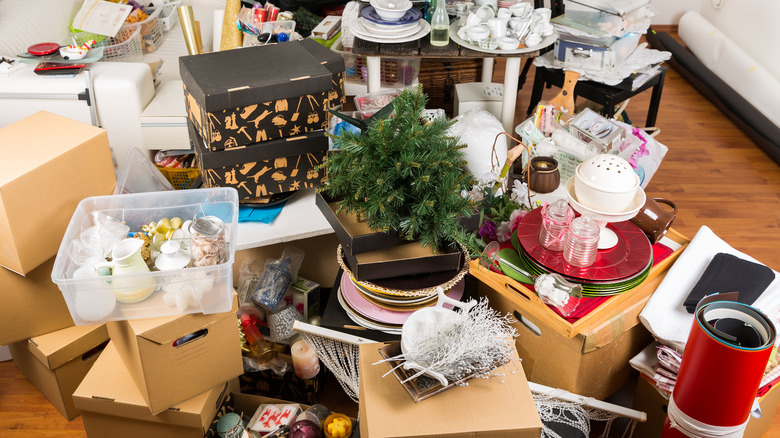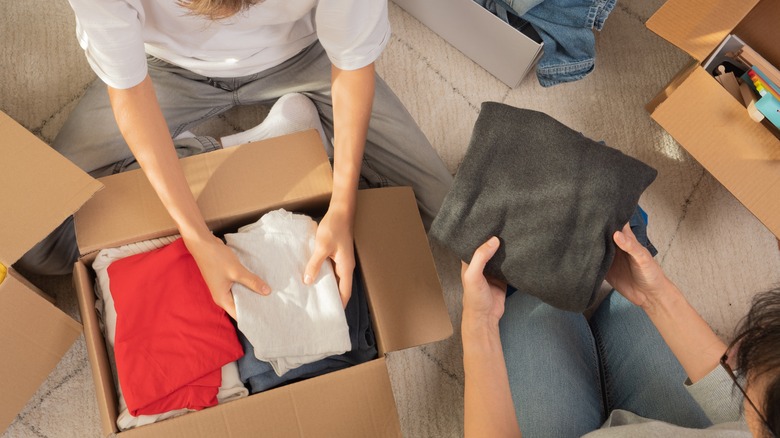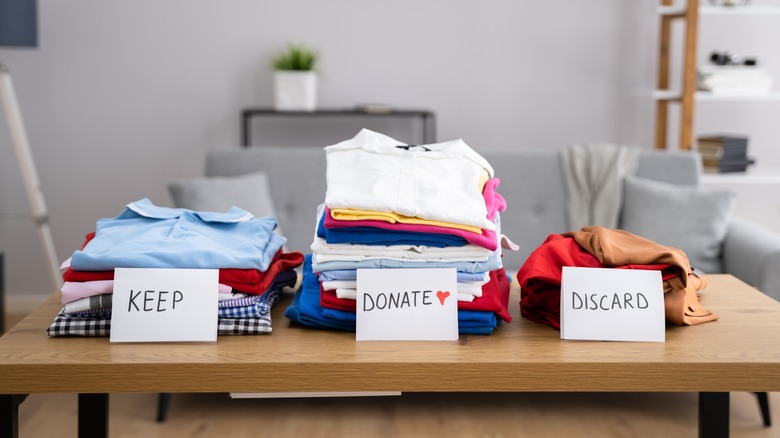The One Common Decluttering Technique That You May Want To Avoid
As the year begins, one of your resolutions might be to organize your home and belongings. When a home has less clutter, you can look forward to having more peace and freedom because you can clean and organize less. The task of decluttering, however, is a mighty one that involves deciding which items need to be thrown out, donated, sold, or kept — which isn't always easy to do.
Before you start decluttering, it's important to understand the chaos and have a vision for the future. NPR advises digging deeper into the true story behind your clutter. Are you hesitant to get rid of your children's old things because they've all grown up? When you know why you keep holding on to certain items, you'll learn how to deal with the connected emotions, and it'll be easier to move forward, says NPR. There are also various approaches to decluttering, and it's important to use the most effective ones. But here's why you may want to avoid this common technique to declutter your home successfully.
The maybe pile
Some common decluttering tips include starting small and going slowly, so you don't get overwhelmed. Another is to donate instead of throwing things away so that the items aren't wasted but can go to a place where they will be valued. Bladenonline recommends upgrading your organization methods after clearing out your home to avoid falling into the old habits that caused the clutter. After decluttering, you need to take on certain approaches to prevention, like sticking to your needs instead of wants when shopping and throwing trash out immediately.
As you figure out the best way to get rid of clutter, it's helpful to know that the one common technique you may want to avoid is the concept of "maybe." This is a typical part of the process of decluttering that involves separating all belongings into three sections: staying, leaving, and maybe. The idea behind the maybe pile is to give yourself more time to determine the actual value of those items, but in most cases, you will convince yourself that the things in that category need to stay.
Alternatives
Separating items into yes, no, and maybe piles should be avoided because it doesn't always resolve your clutter issue. The maybe pile makes the cleaning process challenging because you're left with a heap you don't know what to do with. Organizing things using a '"yes" or "no" approach is much better. For the first category, you can decide whether to keep the items as they are or move them to a new location or storage point. The alternative allows you to choose whether they will be disposed of for good or given a new life somewhere else.
If you have a maybe pile, OT With Style has questions you could ask yourself. Does the item fit your current style or lifestyle? Would you repurchase it? What condition is it in? These can help you determine which items will stay and which will go. Another alternative to consider is organizing your belongings into four categories: trash, give away, keep, or relocate. This Four-Box Method recommended by Becoming Minimalist really boils down to items that are staying and leaving but gives different options for how they will be handled.


